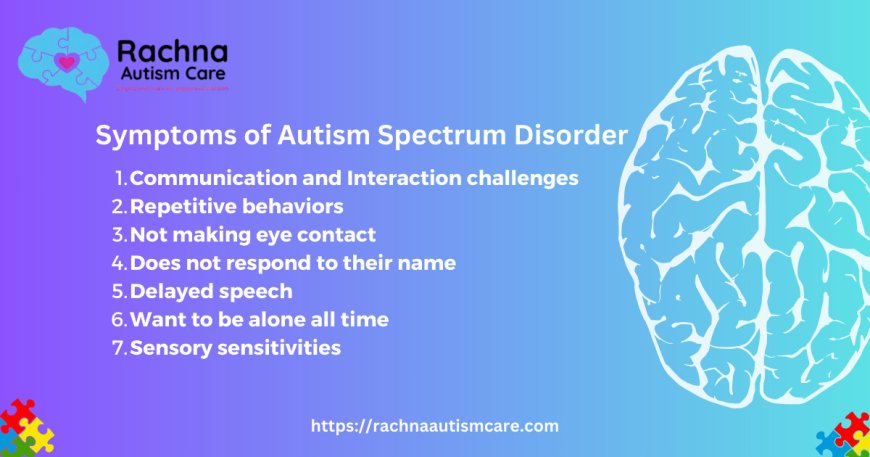Strategies to Address Chewing Behaviors in Autistic Children
Chewing is one of the most common ways for Chewing behaviors in autistic children to regulate their senses. A child with ASD may find chewing very comforting when they are overstimulated, anxious, or require sensory stimulation.

Strategies to Address Chewing Behaviors in Autistic Children
Children with Autism Spectrum Disorder often have unique sensory processing challenges that sometimes manifest as chewing behaviors. These behaviors may seem puzzling to parents or caregivers, but they are often a child's way of self-regulating, coping with sensory input, or addressing an unmet need. Understanding and addressing these behaviors constructively can help children feel more comfortable and develop healthier habits.
Understanding Chewing Behaviors in Children with Autism
Chewing is one of the most common ways for Chewing behaviors in autistic children to regulate their senses. A child with ASD may find chewing very comforting when they are overstimulated, anxious, or require sensory stimulation. Among the reasons why children engage in chewing behaviors are:
Sensory Seeking: The child may need oral stimulation as a way of processing the sensory information.
Relieving Stress or Anxiety: It could be a soothing thing to do in times of tension.
Ritualistic Behavior: The child may get used to the act of chewing with time.
Physical Factors: Some physical factors that might have led to it are teething, dental pains, and nutritional deficiency.
Understanding what triggers the chewing behavior is the first step to tackling them appropriately.
Strategies for Dealing with Chewing Behavior
Here are several strategies to guide parents, caregivers, and educators:
1. Safe Alternatives to Chew On
Instead of trying to eliminate the behavior, provide safe items for the child to chew. Some products that may be helpful to them include chewable jewelry, sensory chew toys, or silicone pencils. The products are designed for use by children with sensory needs.
2. Engage Them in Sensory Activities
Engage the child in activities where they get their sensory fulfillment in other ways. This can include:
-
Deep pressure activities, such as squeezing a stress ball.
-
Adding crunchy or chewy elements to meals and snacks, like carrots, pretzels, or dried fruit.
-
Using sensory activities such as working with kinetic sand or slime to satisfy a need to chew.
3. Pinpoint Triggers
Watch the child closely; you may see that there is a pattern in which she or he experiences these habits. Are the chewing times during transition moments, noise, or general unfamiliar circumstances? When triggers are recognized, it enables you to be prepared in advance and meet those needs.
4. Addressing Anxiety
If chewing is associated with stress or anxiety, teach the child to manage these feelings by incorporating calming techniques. Some effective techniques include:
-
Breathing exercises or mindfulness activities.
-
A weighted blanket or vest for comfort.
-
Create a calming corner or safe space for the child to retreat to when they are overwhelmed.
5. Therapy
Occupational therapists especially working on the aspect of sensory integration can give tailored strategies concerning eating and chewing behaviors. Probably introduce the tools or even the techniques that might work with processing sensory input into this child.
6. Check if it's related to medical or nutrition aspects.
Chew Pica-like behaviors may warrant a visit to a doctor if they seem unusual or sudden. For instance, pica is an anomaly where people have a strange need for non-food items at certain periods. Sometimes, these activities may look like chewing; however, the intervention mechanisms are different.
7. Positive Reinforcement
Celebrate and encourage the child when they use the alternatives to chew or engage in other soothing behaviors. These positive reinforcements can help your child develop healthy habits
Creating a Supportive Environment
These strategies, when implemented into daily life, require patience and consistency. It is also important to be empathetic and understanding, as the child usually chews for a specific reason, and this is their way of showing a need.
Parents, caregivers, and educators should also teach those around the child about Autism Spectrum Disorder to build a positive society for the child. Often, misconceptions related to chewing behaviors can create wrongful judgment, but awareness can minimize stigma.
How to Seek Professional Help
If chewing behaviors persist, become destructive, or significantly impact the child's daily life, seeking professional guidance is essential. Occupational therapists, speech therapists, or developmental pediatricians can collaborate to create a comprehensive plan that meets the child’s individual needs.
Conclusion
Chewing behaviors in autistic children are not habits but can be a way to satisfy sensory, emotional, or physical needs. Understanding the motivations behind these behaviors and application of supportive strategies can help navigate the sensory world of children more comfortably and safely.
Autism Spectrum Disorder is complex, and every child is unique, so the approaches to managing chewing behaviors may vary. Staying informed, patient, and proactive can make a huge positive difference in the child's well-being and development.
What's Your Reaction?



























